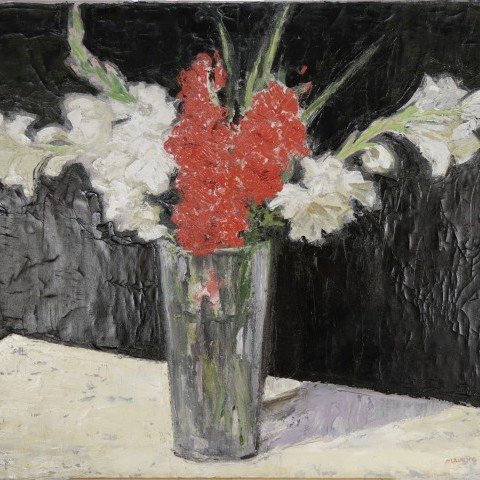Maurice Logan (American 1886-1977) Born north of San Francisco near Calistoga on Temescal Dam Lake, Maurice Logan was an adept watercolor and oil painter of ghost towns, desert landscapes, and marine scenes. The artists he most admired were John Singer Sargent and Joaquin Sorolla.
He was part of the Society of Six, a group in the 1920s led by Selden Gile that espoused bright color (Fauvism), a sense of region, Impressionist style, and rebellion against the prevalent Tonalism and classical strictures of William Keith and Arthur Mathews. The Six exhibited together at the Oakland Art Gallery. Later in his career, he reverted to a Tonalist style.
From childhood, Logan wanted to be an artist, and he took his first lessons from a Miss Clara Cuff. A family friend paid for the lessons because Logan's father disapproved of his son's art interests. However, young Logan was encouraged in artistic expression by the many artists who came to paint in the Temescal Lake area and also by the Bohemian atmosphere of writers he met there including Jack London and Ambrose Bierce.
He enrolled in the Partington Art School in San Francisco, and after the school was destroyed by the earthquake worked with Richard Partington at the Piedmont Art Gallery. Supported financially by his brothers and never by his father, he became the first student to enroll in the post-earthquake San Francisco Institute of Art*, where from 1907 to 1913, he studied with Theodore Wores, John Stanton, Christian Nahl, and Frank Van Sloun, and learned conservative, atmospheric styles of painting. In 1914, he first had his work exhibited, the occasion being the San Francisco Art Association's 1914 Annual Spring Exhibition.
In 1915, he secretly married Bertha Kipke, a young woman whose family were a part of the camping group at Lake Temescal and whom he had known for many years. He studied at the Chicago Art Institute and then returned to California where he studied and then taught for eight years at the California College of Arts and Crafts at Oakland. He and his wife lived on Chabot Road and became neighbors of Selden Gile, with whom he and others formed the Society of Six.
He was set apart from many of his peers by his combining of Bohemianism living and business success and this duality was reflected in his painting garb, which was a three-piece suit covered by an artist's smock. Of these seemingly disparate characteristics, it was said that he was an amalgamation of his own artistic instincts and his father's business-like respectability.
In the 1930s, he changed from a colorful palette to a more subdued gray one and traveled for subject matter around California and into neighboring Arizona and New Mexico including trips to Taos with Selden Gile in 1931 and 1934. He was able to get through the Depression easier than other members of The Six because of the success of his commercial art business including covers for "Sunset" magazine.
He also became active in the California School of watercolor painters, who took a bold, direct approach to regional subject matter.
He died in Orinda, California on March 22, 1977 and his work is in many collections including the Frye Museum in Seattle and the Oakland Museum.

